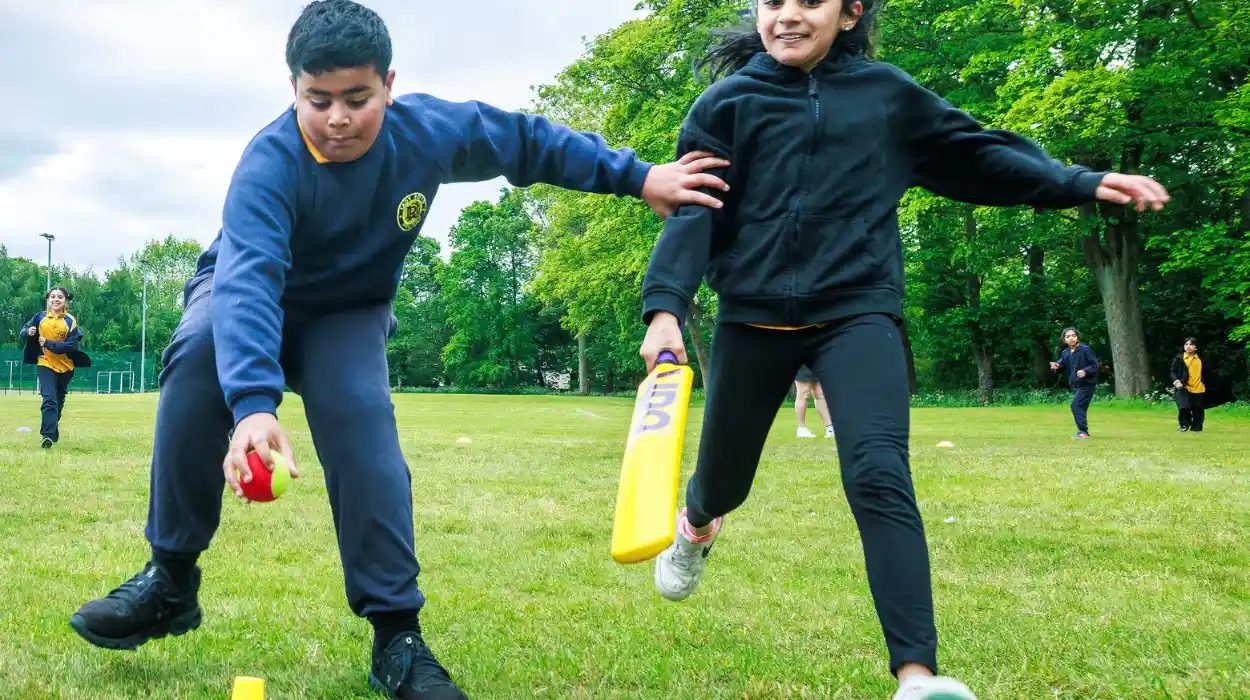UK (Parliament Politics Magazine) – The JU:MP programme in Bradford increased children’s weekly activity by 70 minutes through green spaces, school exercises, and faith-based sports sessions.
As reported by The Guardian, a scheme in the UK that allows children to co-create playgrounds has resulted in the greatest increase in kids’ physical activity ever recorded by such a programme.
What did the JU:MP programme do to transform children’s play in Bradford?
In Bradford, the JU:MP programme involved children and young people in creating play areas on unused land near their homes. They selected features like plants, balance beams, stone stacks, and earth mounds to encourage imaginative play while keeping costs low.
The initiative also engaged madrasas, and religious after-school programs, to include sports like football, cricket, and archery in their lessons, delivering health guidance within faith settings.
The organisers reported a significant impact, benefiting the lives of children from Bradford’s diverse communities. The predominantly white Shipley area saw investment in sports clubs ease the financial burden on parents for extracurricular and holiday activities.
The initiative increased daily playtime and promoted family walks, raising children’s total weekly exercise by more than 70 minutes. Researchers from Born in Bradford used accelerometers worn by children to monitor their movements and collect accurate data.
Children’s moderate to high-intensity exercise increased by six minutes, with weekend inactivity declining by about 22 minutes daily. According to Sport England and Born in Bradford, past long-term exercise interventions have typically raised daily activity by only four minutes on average.
Who’s behind the funding and support for the Bradford initiative?
Sport England is allocating £250 million to 90 locations among the most inactive and deprived areas to address deep-rooted health inequalities. The programme’s impact in Bradford was described as “outstanding,” especially in light of data showing 40.4% of 10–11-year-olds were overweight last year.
The Bradford project, supported by the National Institute for Health and Care Research and backed by Sport England’s infrastructure funding, aimed to reach 30,000 children across eight city neighbourhoods.
What did Dr Sally Barber say about the “whole-system” approach in Bradford?
Dr Sally Barber, head of physical activity research at Born in Bradford, highlighted the programme’s holistic model. She pointed out that real change came from empowering locals, children, families, and community bodies to lead the decision-making.
She said,
“The green space is a shining example – we’ve developed 12 green spaces throughout the programme. We’ve had some projects where teenage girls have been involved from the very beginning, working with landscape architects to develop their ideas, often in places where there have been problems with lighting, flytipping or antisocial behaviour. It’s been really important to have that co-design and have those children saying: ‘Actually, this is what would make me use it’.”
What did Lisa Dodd-Mayne say about the impact of the new approach on activity levels?
Lisa Dodd-Mayne, the Sport England executive director for place, stated,
“This work is a pivotal moment in time, showing that by working differently we can genuinely influence activity levels.”
What did Sam Bacon say about sustainable physical activity in Bradford?
Sam Bacon, who heads physical activity at Active Bradford and JU:MP, said Bradford’s strategy “needs to go into policymaking.”
She said,
“We know physical behaviour habits when you’re young influence what happens when you’re older, and that increasing sedentary behaviour and general physical ill-health is a real problem society faces.”
Ms Bacon added,
“We’re not talking about putting on lots of free football sessions, and when the money runs out, that stops – we’re talking about sustainable behaviour change.”
What did the JU:MP study reveal about child activity levels in Bradford?
Born in Bradford began in 2007 as a birth cohort study. It tracks children’s development, collecting data such as accelerometer readings at multiple points.
The JU:MP study included 766 children in the experimental group, with outcomes compared against a control group of 687. The research period ran between January 2022 and September 2024.
Notable UK sports projects
- This Girl Can
- StreetGames
- Youth Sport Trust
- Chance to Shine
- Premier League Primary Stars
- Active Sussex – Active Young People Programme
- The FA’s Girls’ Football Development Programme
- Coach Core
- Duke of Edinburgh’s Award (Physical Section)
- London Youth Games


